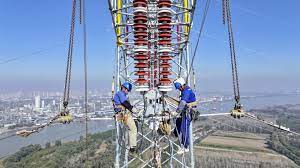In the rapidly evolving landscape of global energy dynamics, Asia has emerged as a central protagonist, steering the course of the world’s energy transition. From pioneering renewable energy technologies to navigating complex geopolitical challenges, the region’s influence reverberates across continents. In this blog post, we delve into the pivotal role Asia plays in shaping the future of energy on a global scale.
Asia’s Energy Pivot
Asia’s ascendancy in the energy realm is unmistakable. With burgeoning economies and soaring populations, countries like China, India, and Indonesia have become powerhouses of energy consumption. This voracious appetite for energy, coupled with a growing consciousness of environmental sustainability, has propelled Asia to the forefront of the clean energy revolution.
Renewable Energy Revolution
At the heart of Asia’s energy transformation lies a profound shift towards renewable sources. China, in particular, has made monumental strides in renewable energy deployment, becoming the world’s largest market for solar and wind power. India, too, is rapidly expanding its renewable energy capacity, setting ambitious targets to reduce carbon emissions and mitigate climate change.
Geopolitical Implications
Asia’s energy landscape is not devoid of geopolitical complexities. The region’s strategic significance, coupled with competing territorial claims and resource dependencies, underscores the intricate interplay between energy and geopolitics. From maritime disputes in the South China Sea to energy security concerns along critical shipping routes, Asia navigates a delicate geopolitical balance that reverberates on the global stage.
Technological Innovation
Innovation lies at the heart of Asia’s energy transformation. From cutting-edge solar technologies to advancements in battery storage, Asian countries are driving innovation and shaping the future of energy technology. China’s dominance in electric vehicle manufacturing and India’s strides in solar innovation underscore the region’s pivotal role in driving technological advancements that will reshape the global energy landscape.
Challenges and Opportunities
Despite its remarkable progress, Asia faces a myriad of challenges on its path towards sustainable energy development. Air pollution, energy access, and the transition away from fossil fuels pose significant hurdles that require innovative solutions and coordinated action. However, amidst these challenges lie immense opportunities for collaboration, innovation, and shared prosperity.
In military strategy terms, a German strategist would identify it as the “schwerpunkt” – the pivotal center or focal point. Within a 3,300-kilometer radius circle, centered on Mong Khet in Myanmar, reside approximately four billion people, surpassing the population outside this boundary. This region emerges as the critical nexus for the energy and climate landscape of the 21st century.
Encompassing India, China, Indonesia, and Pakistan, respectively the first, second, fourth, and fifth most populous nations globally, this circle holds significant geopolitical importance. It embraces adherents of major world religions – Islam, Hinduism, and Buddhism – alongside the secular philosophy of communism.
From a climate perspective, it generates over half of the world’s energy-related carbon dioxide emissions and fulfills 45% of global primary energy demand, with 57% of solar power capacity.
Despite accounting for only 7% of global oil production and 13% of gas output, this region remains a significant importer of fossil fuels. Geopolitically, it hosts various flashpoints, including the Korean peninsula, the South China Sea disputes, Taiwan, the Sino-Indian border, the Strait of Malacca, and the India-Pakistan relationship.
Moreover, it houses a substantial portion of the world’s manufacturing capacity for clean energy technologies, predominantly in China, with burgeoning potential in India. Additionally, it’s a hub for energy innovation, predominantly in China, Japan, and Taiwan.
Considering the pivotal role of this region in clean energy production and raw material supply, it’s evident that the future of global climate sustainability and energy stability hinges more on developments within this circle than on other geopolitical players like Washington, Brussels, Moscow, or the Gulf.
While the Gulf Cooperation Council (GCC) recognizes this reality, the West appears to lag in understanding its significance fully. Efforts such as those by the International Energy Agency and organizations like the Centre for Research on Energy and Clean Air are commendable but remain insufficiently focused on Asian dynamics.
The narrative surrounding climate and energy often fixates on Western developments, overlooking the pressing needs and unique perspectives of Asian countries. These nations face severe air quality issues, primarily due to coal burning and traffic emissions, demanding comprehensive solutions beyond simplistic dichotomies.
Asian countries, driven by energy security concerns, pursue diverse energy strategies, balancing renewables, nuclear power, and fossil fuels. While countries like Japan, Taiwan, and South Korea prioritize renewables and nuclear for self-sufficiency, others rely heavily on coal due to domestic availability.
Addressing climate change necessitates constructive collaboration, recognizing common interests and pragmatic solutions over ideological divides. It demands scaling up cleaner, more reliable energy sources while acknowledging regional dynamics and priorities.
Amidst global conflicts, energy emerges as a strategic lever, while climate cooperation remains a beacon of hope for international harmony. The resolution of 21st-century environmental and energy challenges pivots on actions within this Asian circle.
As Asia continues to lead the charge towards a sustainable energy future, the world looks to the region for inspiration, innovation, and leadership. From renewable energy deployment to geopolitical maneuvering, Asia’s influence extends far beyond its borders, shaping the trajectory of global energy dynamics. In this era of unprecedented change, Asia stands at the vanguard of the global energy transformation, charting a course towards a more sustainable and prosperous future for all.



